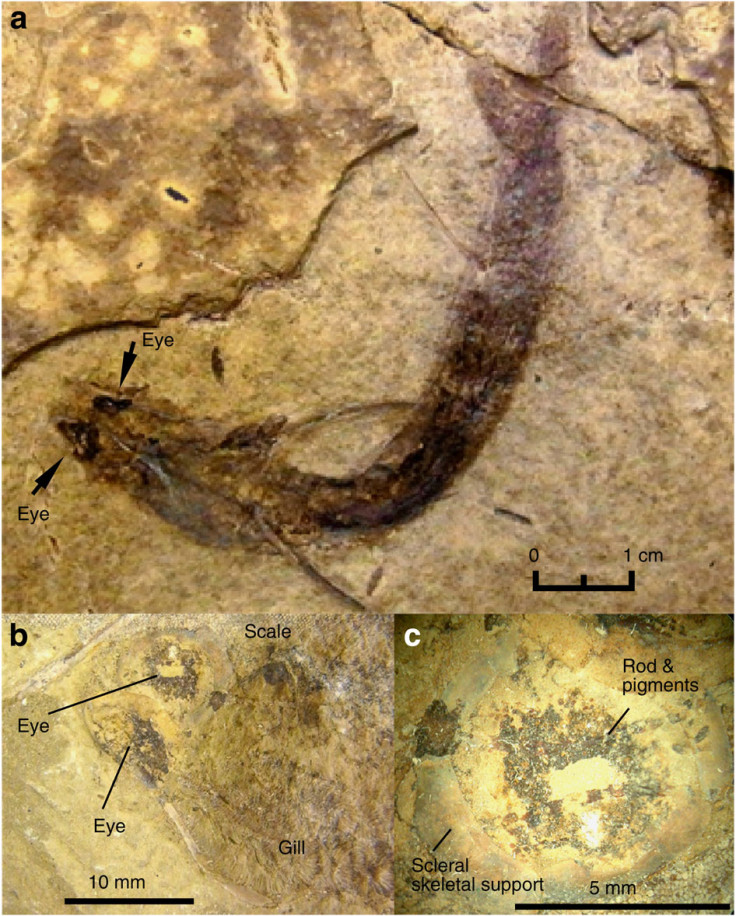300 million-year-old 'spiny shark' fish eye shows first evidence of colour vision

A fossilised fish eye from a member of the "spiny shark" family has provided evidence that colour vision first emerged at least 300 million years ago.
Published in the journal Nature Communications, the authors wrote that vision – consisting of "an optical system, receptors and image-processing capacity", has existed for at least 520 million years.
"Except for the optical system, as in the calcified lenses of trilobite and ostracod arthropods, other parts of the visual system are not usually preserved in the fossil record, because the soft tissue of the eye and the brain decay rapidly after death."
The fossil found in Kansas, US, provided an exceptionally well preserved specimen to work from, they said.
"Here we show that the original colour, shape and putative presence of eumelanin have been preserved in the acanthodii fish Acanthodes bridgei. We also report on the tissues of its eye, which provides the first record of mineralized rods and cones in a fossil and indicates that this 300 million-year-old fish likely possessed colour vision."
The extinct fish had a long streamlined body and fins with spines. It existed long before the dinosaurs and is believed to have lived in shallow water.
Study co-author Gengo Tanaka, from Japan's Kumamoto University, said: "This is the first discovery of vertebrate retinal fossils." As well as having extremely well preserved eyes, the fossil also had exceptional gills. Researchers will now look to see if any other organs survived.
Acanthodes bridgei went extinct about 250 million years ago – a time when about 90% of life on Earth was wiped out in one of the planet's biggest mass extinction events.
© Copyright IBTimes 2025. All rights reserved.






















